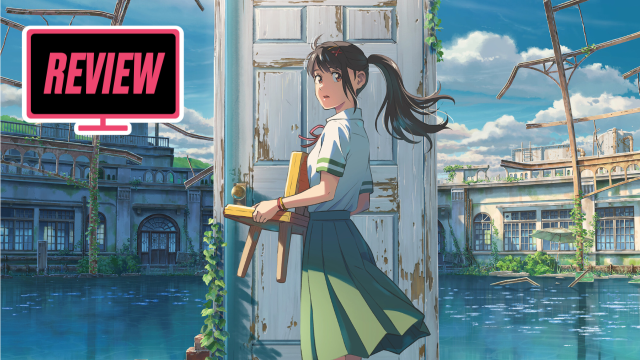I recently got the chance to see Makoto Shinkai’s new film, Suzume, thanks to the generous folks over at Crunchyroll. I thought the film was fantastic and stayed true to Shinkai’s philosophy of making everybody cry, something I – a professional crybaby – really respect. But the thing I loved the most about Suzume is the way the film explores different kinds of trauma and then force-feeds this trauma to the viewer in a way that leaves you questioning yourself and how you can better heal your inner child.
Quick recap
Suzume is about… Suzume, a high school girl living in Kyushu, meets a man named Souta Munakata, looking for doors in abandoned ruins. She ends up following him to find a door in her hometown, and in so doing discovers that there is a world beyond ours. A giant worm is escaping through these doors and causing earthquakes within our own universe. Without spoiling anything, Suzume and Souta team up to travel across Japan and protect humanity from these unnatural disasters created by the giant worm. If you’re still not convinced you should watch Suzume, let me sweeten the pot: there’s a talking cat and a three-legged chair that can sprint and jump like an olympian.
The film is set in present-day Japan and was inspired by the 2011 Tohoku earthquake and tsunami, the strongest earthquake ever recorded in Japan. The disaster resulted in the Fukushima nuclear meltdown, causing radioactive water to be detected in tap water and residents needing to be evacuated. It was a disaster that impacted the world and the way we live within our environment.
It’s been over 10 years since the Tohoku disaster. The buildings have been rebuilt, and Fukushima is once again safe for people to live in. But the national trauma caused by the earthquake, the ensuing tsunami and the nuclear meltdown still have a hold on the Japanese consciousness, and Suzume makes that clear. The film explores the cultural trauma of the disaster and its impacts on the individual. Through the individual trauma expressed in the film, audiences can connect to Suzume through their own individual traumas – specifically childhood and familial trauma.
Our appreciation of our world only comes after we appreciate life itself

After losing her mother in the 2011 disaster, Suzume is left to process her trauma and her grief alone. She ends up working with Souta to prevent more disasters and, through this, is able to distract herself from the pain her inner child grapples with every day. But when Souta is turned into the chair Suzume’s mother gave her, Suzume is forced to start accepting and processing the disaster that took her mother away.
She travels across Japan with Souta to try and prevent the giant worm from causing more disasters. As their adventure ramps up, Suzume becomes the beacon of light that allows Japan itself to confront and heal its national and cultural trauma.
But it is only at the end of the film that Suzume begins to deal with her own trauma. When Suzume enters a dimension door in her hometown, she finds her younger self — a younger self still possessing memories of her mother comforting her. But when Suzume approaches her past self, she realises she must be the one to comfort her inner child. While the bad things that happened to her when she was a child are not her fault, she is the only one that can heal the pain those events have caused.
In this moment, Suzume asks viewer to dig deep, to acknowledge their own inner child and their own trauma. No matter how big or small.
Like Miyazaki, the charm of Shinkai’s work stems from the inspection of the human experience and each and every action taken by each and every human being. Shinkai zooms in on the small parts of our daily lives. Riding a bike to school. Eating good food. Spending time with other people. When he’s done zooming in, Shinkai swiftly zooms out to reveal a world that suddenly seems beautiful. More beautiful than it was before. Our appreciation of our world only comes after we appreciate life itself. Then we can heal the trauma that seems much bigger than us.
Suzume is one of Shinkai’s best works. It is a fantastic film overflowing with beautiful art, animation and a story that puts it in conversation with Your Name and Weathering With You. Like other Shinkai films, Suzume deals with disaster and trauma, but we need to look within ourselves to find the answer this time.
Where to see Suzume in Australia
NSW
VIC
QLD
SA

Leave a Reply